Description
Crocheting and wearing Aero is an elegant experience of Tunisian crochet lace. With fine silk yarn and the add-as-you-go beading option, the beauty of the lacy stitches hanging from your hook will inspire “just one more row!”
I developed this point-to-point stitch pattern and love it because I can build up more stitching speed than usual with Tunisian crochet. I also found its filet logic easy to memorize.
Tall stitches and open spaces create a Tunisian version of traditional filet crochet. Writing my newsletter on lacy nets inspired it. And, the stitch pattern looks nice enough on both sides to call it reversible.
Crocheting a triangular wrap from point to point makes it easy to use any amount of light weight yarn you have on hand. If you use a smaller amount of yarn than I did, the wide, shallow triangular shape will come out scarf-sized. (The pattern is created the same no matter how much yarn you use.)
Skill Level
Advanced Intermediate. Aero combines Tunisian stitches that may be familiar to those who have already ventured beyond the Tunisian Simple Stitch: the Tunisian Yarn Over (Tyo), Tunisian Double Treble {UK: Tunisian Triple Treble} (Tdtr), and twisted stitches. To see if you’re ready for an Intermediate-level Tunisian pattern, review this quick checklist.
It’s best if you have crocheted at least one Beginner or Easy level Tunisian crochet pattern first. Warm Aeroette started out as a practice swatch for students in my Aero classes! Other good stepping stones to Aero would be Ennis Revelation and Aery Faery. I’ve kept pattern abbreviations to a minimum and include International English equivalents for American terms.
?After using this pattern you will know (if you didn’t already):
- How to create dramatic new filet lace with Tunisian crochet stitches
- How to crochet a triangular scarf or wrap from point to point and the delightful convenience of crocheting the edging as you go
- How to add beads to the as-you-go edging without pre-stringing them
- The power of simple blocking to transform Tunisian crochet lace
Finished Dimensions
The pictured green wrap is 21″ at deepest center point and 61″ wide from point to point {53 X 155 cm}. Crocheting a shawl or scarf from point to point makes it easy to use any amount of yarn you have on hand, and to make it the size you wish.
Materials
Crochet Hook: Size F/US5/3.75 mm Tunisian hook, at least 13″/33 cm long. You can use a shorter Tunisian hook for the shortest beginning rows, and then switch to a longer hook as it becomes necessary for comfortably holding all loops on the hook. If you are going to add beads, you’ll need a steel crochet hook that is small enough to fit through the bead holes and pull through a loop of your yarn. (I used a .75mm Tulip hook labeled #10. Other brands may label the same mm size with a different number.)
Yarn used for pictured scarf: Handmaiden Sea Silk (70% Silk, 30% Seacell® 437 yds/400 m per 3.5 oz/100 g ball), 1 full skein.
Yarn substituting advice: This pattern will work with any amount and weight of yarn. To match the effect of the pictured wrap, look for a yarn weight of #1 Super Fine (“Fingering”) {UK & AUS 3 Ply}; or one recommending a needle or hook size range of B/US1/2.25 mm – D/US3/3.25 mm on its label. If this is your first time crocheting into the loops of Tunisian Yarn Over stitches, try to find a yarn that has subtle color changes like the tonal hand-dyed one shown. It was a bit challenging at first to make tall stitches with slippery yarn, but I quickly grew used to it.
Small scale for weighing yarn: recommended if you’re using an odd number of skeins of yarn, or partial skeins.
Beads (optional): At least 50 size 6/0 (“E Bead”) beads and a steel crochet hook small enough to fit through the bead hole and pull a loop of yarn through it. Triple your quantity of beads if you’ll be adding 3 beads to a stitch at a time (see photo in pattern). For the green Aero I used 1 bead per 2-row repeat for a total of 44 beads; I had to discard a few that had small holes. The number of beads you need will vary because the usable holes of your beads are likely to vary, and because you may get fewer, or more, row repeats from your yarn.
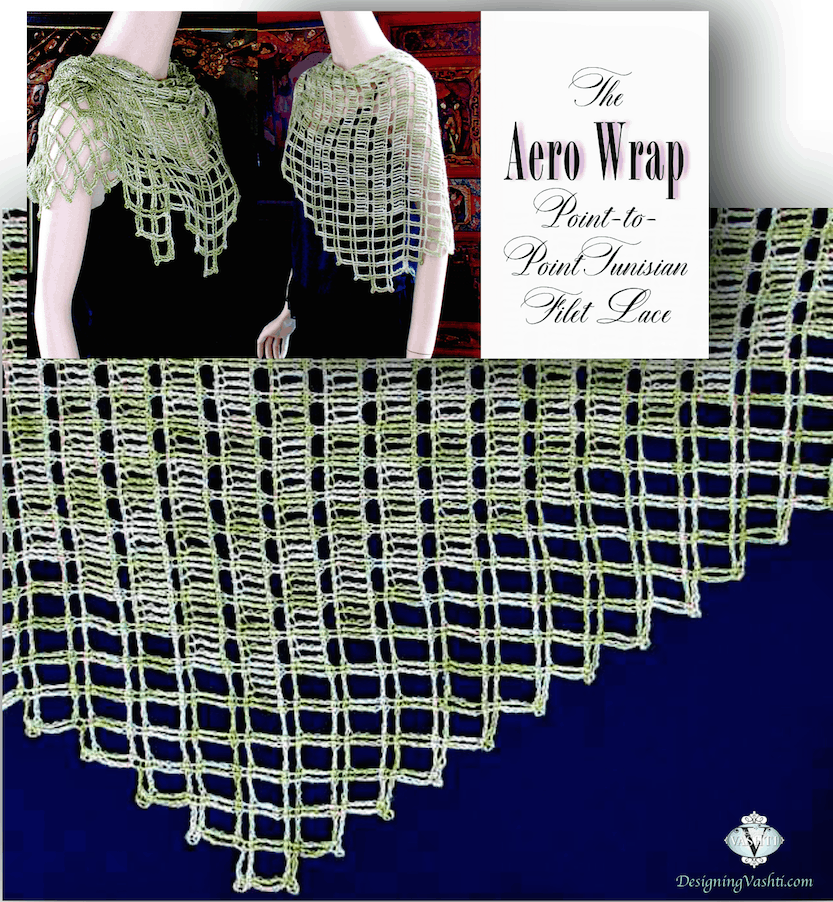
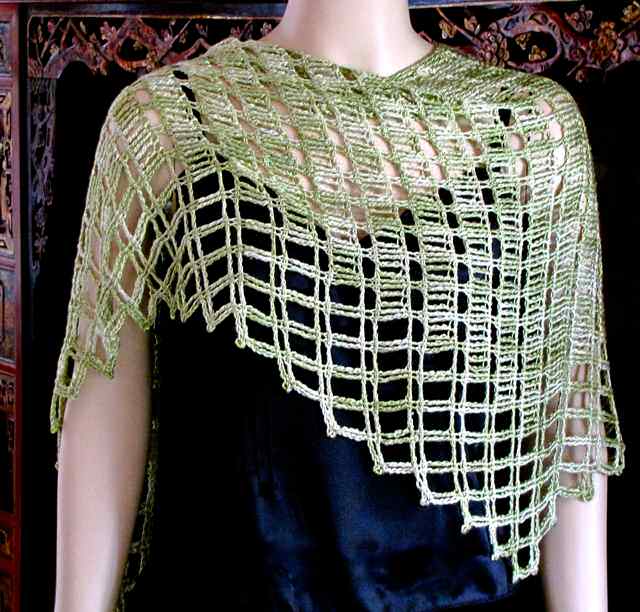
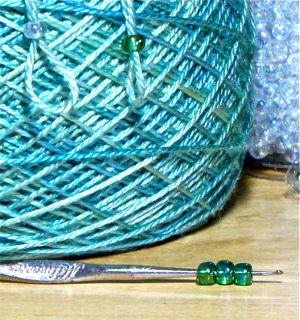
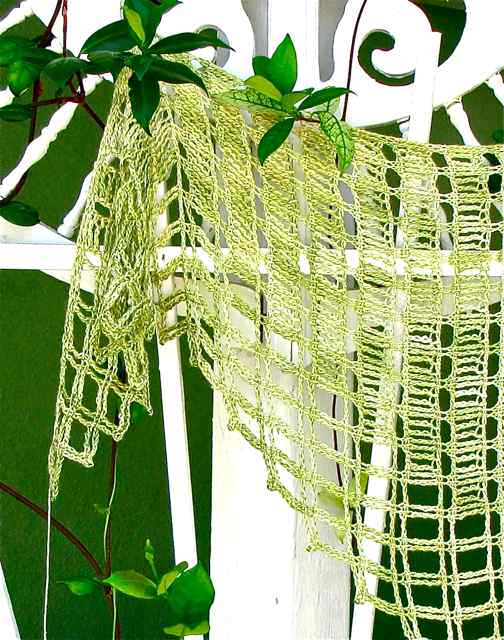
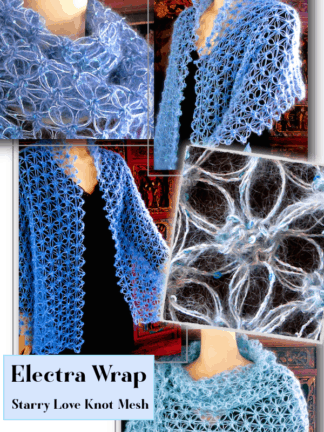
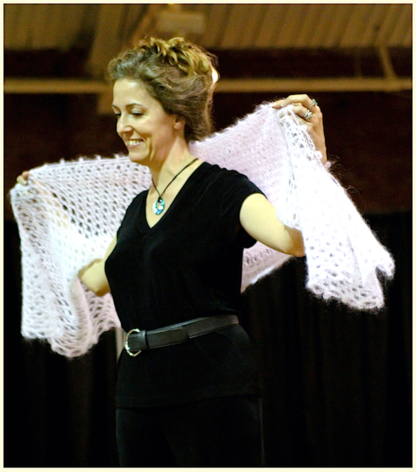
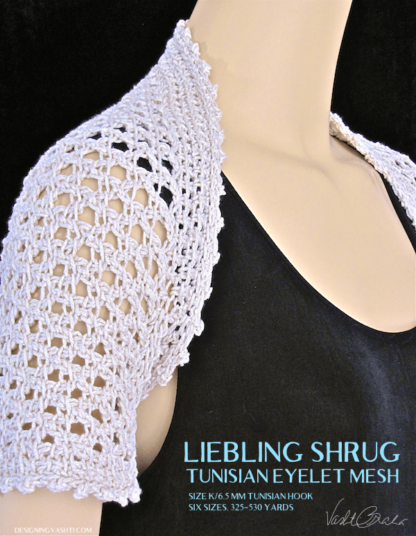

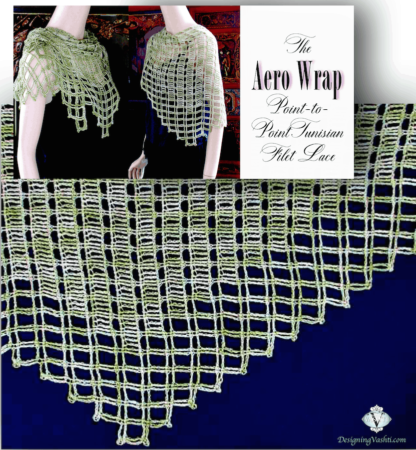
Reviews
There are no reviews yet.